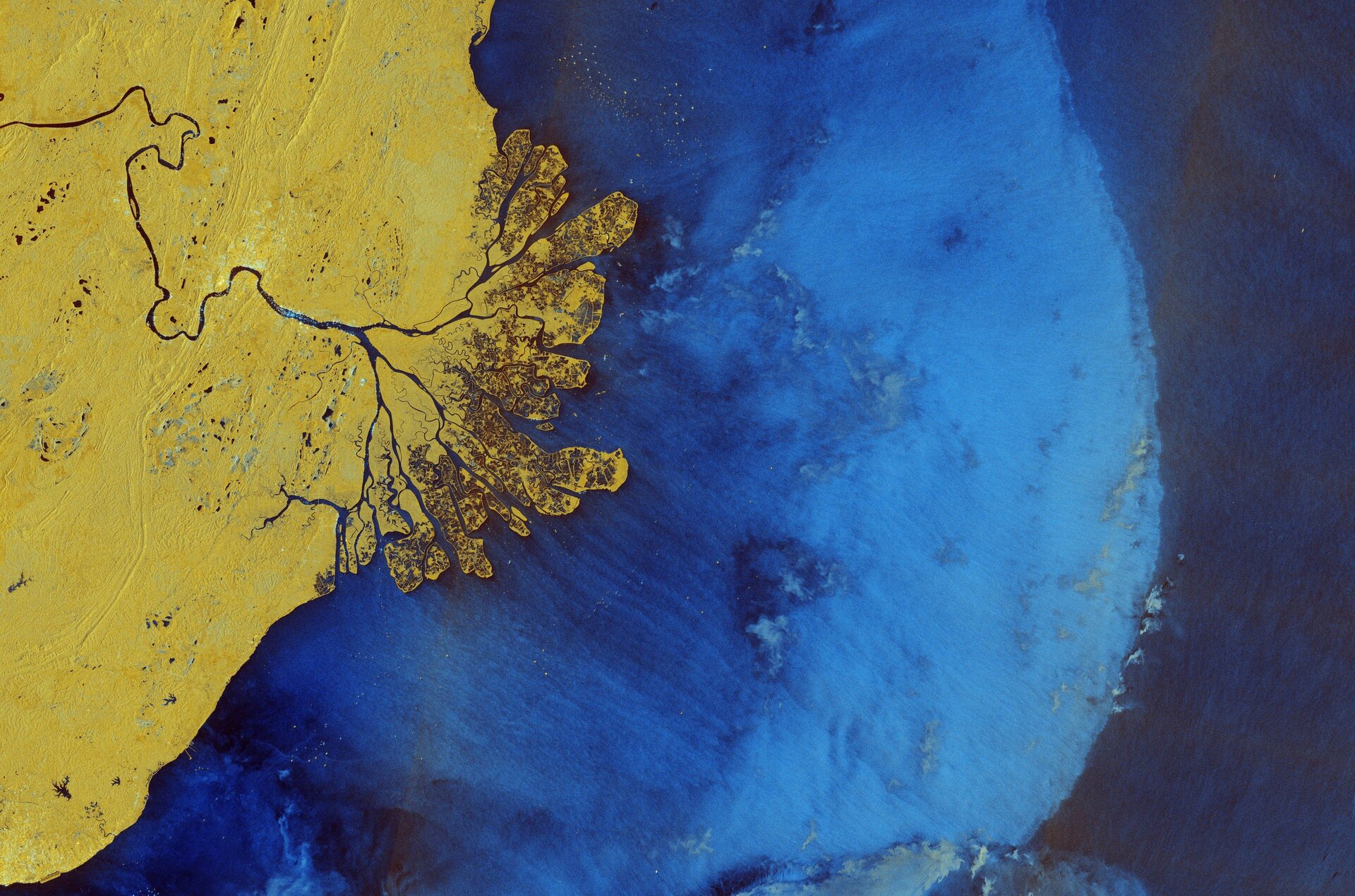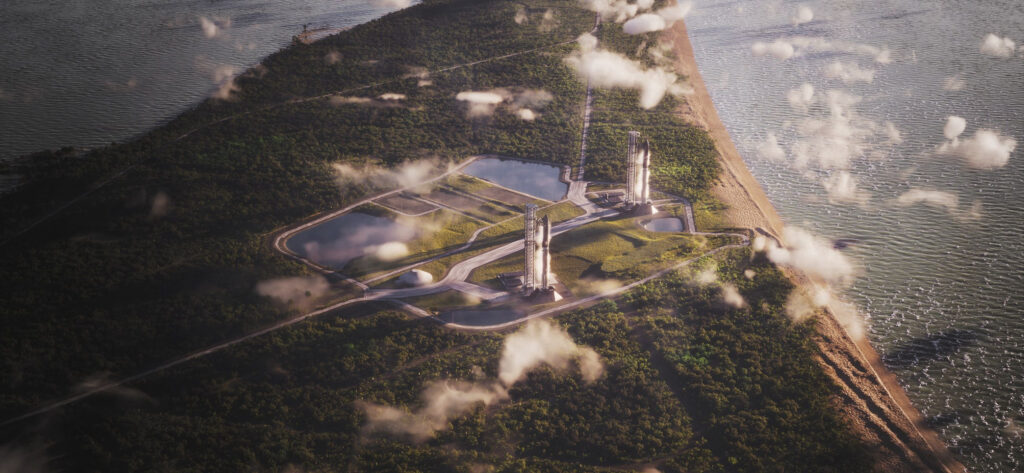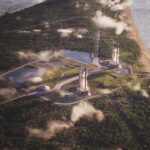Now Reading: East Kalimantan’s Biodiversity Faces Threats Amid Development Challenges
-
01
East Kalimantan’s Biodiversity Faces Threats Amid Development Challenges
East Kalimantan’s Biodiversity Faces Threats Amid Development Challenges


In the captivating tapestry of East Kalimantan, a province rich with biodiversity, the land cover and ecosystems are as diverse as they are vital. The terrain is predominantly cloaked in dense rainforests, which serve as one of the most critical carbon sinks on our planet. These forests, characterized by towering dipterocarps and a rich understory, provide essential habitats for countless species, some of which are endemic to Borneo, such as the orangutan and the proboscis monkey.
The intricate network of ecosystems found in this region includes not only dense forests but also a varied landscape featuring wetlands and mangrove swamps. The mangroves, which fringe the coastlines, play a pivotal role in coastal protection and serve as nursery grounds for marine life. These unique ecosystems provide a sanctuary for fish and crustaceans, contributing significantly to local fisheries.
- Biodiversity Hotspot: East Kalimantan is part of the Indo-Burma biodiversity hotspot, hosting thousands of plant and animal species. In fact, it is estimated that Borneo is home to over 15,000 species of flowering plants, 3,000 species of trees, and an array of unique wildlife.
- Threatened Species: The area is home to several critically endangered species, including the Bornean orangutan (Pongo pygmaeus) and the Bornean pygmy elephant. Conservation efforts are imperative to prevent habitat loss due to logging and agricultural expansion.
- Unique Ecosystems: Tropical rainforest, peat swamp forest, and hill forest ecosystems are vital for maintaining the ecological balance. Their intricate relationships foster high levels of biodiversity.
The satellite imagery from Copernicus Sentinel-1 beautifully illustrates this diversity. The contrasting colors in the radar image depict various land covers: bright yellows represent lush forest coverage, while dark blues indicate bodies of water. Each color reveals the intricate tapestry of life that exists in this region. Notably, the dappled shades of green highlight the areas where human activity has begun to encroach upon these natural landscapes, leading to a delicate balance between conservation and development.
Moreover, the diverse land cover of East Kalimantan influences local climate patterns and contributes significantly to the global climate system. The carbon sequestered within these forests plays an important role in mitigating climate change effects. Scientists emphasize the urgent need to safeguard these ecosystems, as they not only support the local economy through tourism and sustainable agriculture but also foster resilience against environmental changes.
Communities in East Kalimantan have traditionally depended on the region’s rich natural resources. The integration of local practices with sustainable agriculture and aquaculture has shown promise in enhancing food security while preserving biodiversity. For example, traditional rice farming practices, which incorporate agroforestry principles, maintain soil health and prevent erosion, ultimately supporting the ecosystem’s integrity.
In the quest to balance economic growth and environmental stewardship, it is critical to engage local communities in conservation efforts. Empowering indigenous populations with the knowledge and resources to manage their land sustainably can lead to innovative solutions that benefit both the people and the planet.
The land cover and ecosystems of East Kalimantan present a dynamic interplay of nature and human activity. As we analyze the intricate patterns revealed in satellite images, we must remember that these landscapes tell a story of both vulnerability and resilience, prompting us to take decisive action to preserve their wonders for future generations.
Geographically, East Kalimantan is a mosaic of stunning features that shape the daily lives of its inhabitants and influence regional climate patterns. The Mahakam River, the lifeblood of this province, carves its way through the landscape, supporting both transit and trade. This river, with its labyrinthine tributaries, feeds into the Makassar Strait, which brings marine resources and acts as a natural boundary between land and sea. Along its banks, urban centers like Samarinda, bustling with activity, emerge, while traditional villages continue to thrive. Visitors can witness the juxtaposition of modernity and heritage as they traverse this vibrant land.
The rugged mountain ranges in the interior provide a dramatic backdrop to the sprawling rainforests below, their peaks often shrouded in mist and mystery. The Berau and Kutai mountains offer not only breathtaking views but also act as vital watersheds. They play an important role in regulating the water cycle for the region, ensuring that the lush ecosystems thrive. This mountainous terrain is interspersed with plateaus and valleys, each offering unique microclimates that host a variety of flora and fauna.
Human activity in East Kalimantan is a double-edged sword. On one hand, the province is rich in natural resources, including palm oil, timber, and minerals. This wealth brings significant economic opportunities and contributes to national GDP. However, the exploitation of these resources has often led to severe deforestation and habitat destruction. Satellite imagery vividly captures these changes: patches of green forests are replaced with rectangles of plantation, revealing the urgent need for sustainable practices.
- Timber Industry: The logging sector has thrived in East Kalimantan, with extensive clear-cutting operations raising urgent concerns about sustainability. Chainsaws echo through the forests, signaling a struggle between economic prosperity and ecological preservation.
- Palm Oil Plantations: These expansive plantations are a significant contributor to local and national economies. However, they often come at a steep environmental cost, leading to the destruction of biodiverse habitats and the displacement of indigenous communities.
- Mineral Extraction: The rich deposits of coal and other minerals have attracted investments, yet this has raised issues concerning land rights and environmental degradation. Mining activities are often associated with pollution and disruption of local ecosystems.
Despite these challenges, remarkable initiatives are emerging that aim to reconcile economic development with environmental stewardship. Community-based programs focusing on agroforestry and ecotourism are gaining traction. These endeavors often emphasize the importance of sustainable practices that enable local populations to benefit from their natural surroundings without compromising the integrity of the ecosystems they depend on.
For instance, eco-conscious visitors can engage in responsible travel, contributing to conservation efforts while experiencing the natural wonders of East Kalimantan. Participating in guided tours that promote respect for wildlife and forests, such as bird watching or river cruises along the Mahakam, offers a chance to appreciate the region’s beauty while fostering a culture of sustainability.
As the landscape of East Kalimantan continues to evolve, the residents face crucial decisions. Balancing human needs with the urgency of environmental preservation will be pivotal. Engaging local communities in discussions about land use and providing them with the tools to pursue sustainable livelihoods can help chart a course toward a resilient future. The vibrant tapestry of East Kalimantan, woven together by its natural beauty and rich cultural heritage, holds promise—if only we can find the wisdom and will to protect it.
Stay Informed With the Latest & Most Important News
Previous Post
Next Post
-
 012024 in Review: Highlights from NASA in Silicon Valley
012024 in Review: Highlights from NASA in Silicon Valley -
 02Panasonic Leica Summilux DG 15mm f/1.7 ASPH review
02Panasonic Leica Summilux DG 15mm f/1.7 ASPH review -
 03How New NASA, India Earth Satellite NISAR Will See Earth
03How New NASA, India Earth Satellite NISAR Will See Earth -
 04And Thus Begins A New Year For Life On Earth
04And Thus Begins A New Year For Life On Earth -
 05Astronomy Activation Ambassadors: A New Era
05Astronomy Activation Ambassadors: A New Era -
06SpaceX launch surge helps set new global launch record in 2024
-
 07From Polymerization-Enabled Folding and Assembly to Chemical Evolution: Key Processes for Emergence of Functional Polymers in the Origin of Life
07From Polymerization-Enabled Folding and Assembly to Chemical Evolution: Key Processes for Emergence of Functional Polymers in the Origin of Life




















